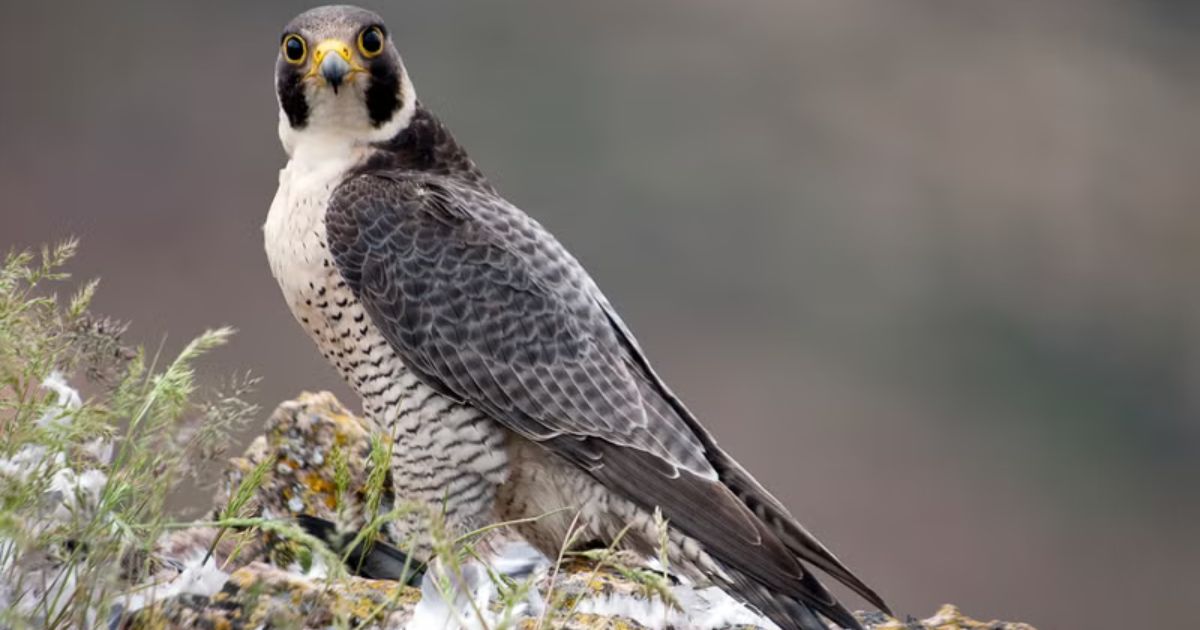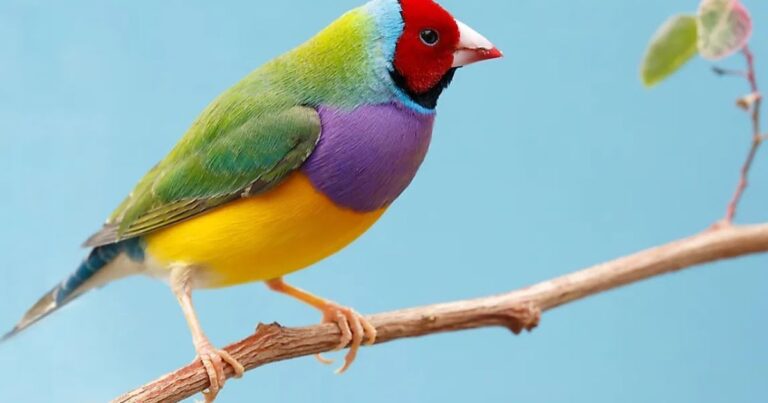What Is The Fastest Bird In The World
Speed has always captured our imagination, whether it’s through racing cars or sprinting athletes, but did you know that one bird can claim the title of the fastest in the world? Unraveling the identity of this incredible creature sheds light on both its impressive abilities and the environmental factors that influence its life.
This article will answer the question of what is the fastest bird in the world while providing intriguing details about its lifestyle and significance within its ecosystem. Prepare to be amazed by the natural wonders that surround us!
Meet the Fastest Bird on Earth
Meet the Fastest Bird on Earth, the peregrine falcon, a remarkable creature that defies our expectations of speed and agility. When in a hunting dive, known as a stoop, this avian marvel can reach astonishing speeds of over 240 miles per hour, making it not only the fastest bird but also the fastest animal on the planet.
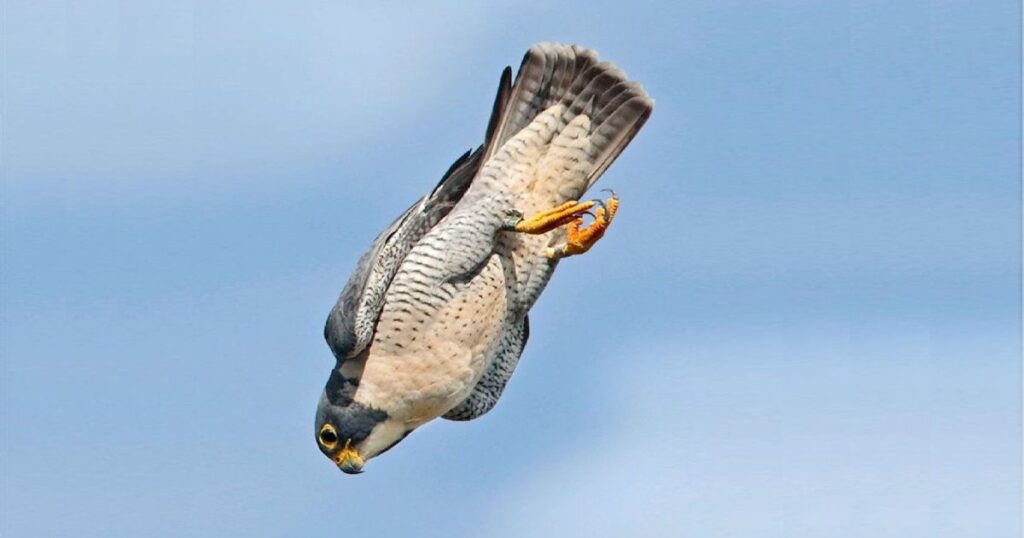
This incredible velocity is achieved through a combination of aerodynamic body shape, powerful muscles, and keen eyesight, allowing the falcon to spot prey from great distances and swoop down with breathtaking precision.
What sets the peregrine falcon apart isn’t just its speed; it’s also its adaptability. Found on every continent except Antarctica, these birds thrive in diverse environments, from urban skyscrapers to rugged cliffs. Their ability to nest in man-made structures demonstrates a remarkable resilience and flexibility in behavior.
Recent studies have shown that peregrine falcons possess a unique respiratory system that allows them to maintain high levels of oxygen during their rapid descents, showcasing an evolutionary advantage that perfectly complements their predatory prowess.
Peregrine Falcon – Nature’s Speed Champion
Meet the fastest bird on Earth, the Peregrine Falcon, renowned for its astonishing speed and remarkable hunting prowess. When it dives to catch its prey, this avian marvel can reach speeds of over 240 miles per hour, making it not only the fastest bird but also the fastest animal on the planet.
This incredible velocity is facilitated by its aerodynamic body shape, powerful muscles, and specialized respiratory system that allows it to breathe efficiently even during high-speed pursuits.
But speed isn’t the only fascinating aspect of the Peregrine Falcon. Their keen eyesight enables them to spot potential prey from great distances, often soaring high above their hunting grounds before executing a breathtaking stoop. These raptors display remarkable adaptability, thriving in diverse environments, from urban skyscrapers to remote cliffs.
As human activities encroach upon their habitats, the Peregrine Falcon serves as a symbol of resilience in nature, having made a remarkable comeback from near extinction in the mid-20th century due to conservation efforts. Each sighting of this magnificent bird is a reminder of nature’s extraordinary capabilities and the delicate balance we must maintain to protect them.
How Fast Can Birds Fly?
When exploring the question of “How fast can birds fly?”, it’s essential to recognize that speed varies dramatically across species. The peregrine falcon, for instance, holds the title for the fastest bird, reaching speeds over 240 miles per hour during its hunting stoop, or dive.
his remarkable velocity isn’t merely for show; it serves a crucial purpose in the bird’s predatory tactics, allowing it to strike with precision and force. In contrast, larger birds like the albatross may glide gracefully over the ocean at speeds around 50 miles per hour, leveraging wind currents to conserve energy during long migrations.
Speed isn’t just about sheer velocity; it’s also about adaptation. Birds that inhabit different environments have evolved unique flying techniques suited to their lifestyles. For example, hummingbirds, while not the fastest in terms of top speed, exhibit incredible agility and rapid wing beats that allow them to hover in place and navigate through dense vegetation.
This ability enhances their efficiency in accessing nectar, demonstrating how flight adaptations are intricately linked to survival strategies. Ultimately, understanding “How fast can birds fly?” reveals not only the breathtaking capabilities of these creatures but also the diverse evolutionary paths they have taken to thrive in various ecosystems.
Top Speeds of Common Fast Birds
When it comes to avian speedsters, the peregrine falcon reigns supreme, reaching astonishing dive speeds of up to 240 miles per hour. This remarkable bird doesn’t just showcase raw power; its streamlined body and keen eyesight allow it to spot prey from great distances, making it an apex predator in the skies.
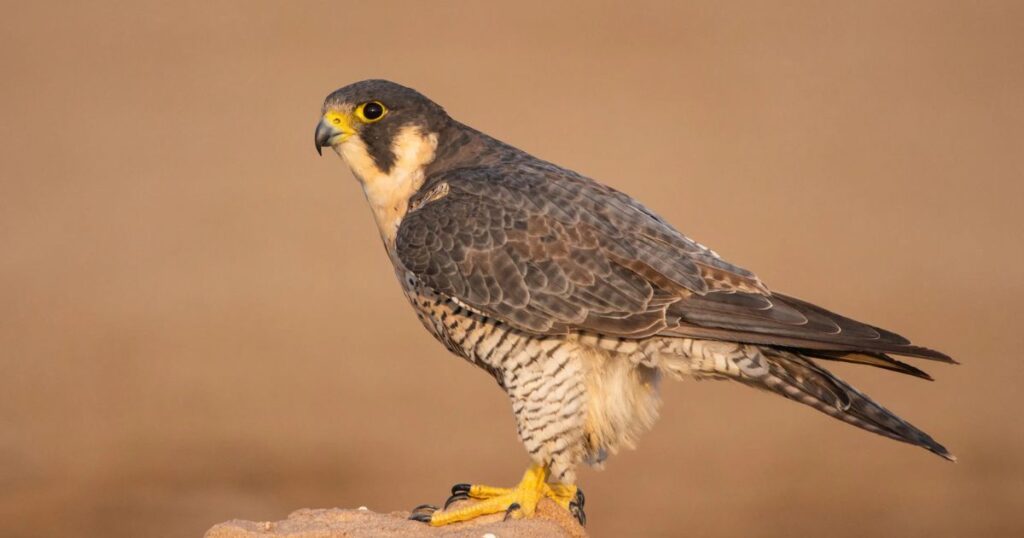
Yet, while the peregrine takes the crown for speed during its dives, other birds also demonstrate impressive velocities in level flight. For instance, the common swift can reach speeds of 69 miles per hour, showcasing incredible endurance as it spends most of its life airborne.
The golden eagle is not just a symbol of strength but also a formidable flier, capable of reaching speeds of 150 miles per hour when diving. Its mastery of the air allows it to soar at high altitudes for hours, scanning vast landscapes for potential meals. The grey-headed albatross boasts a unique adaptation for long-distance travel, gliding effortlessly over oceans at speeds of around 79 miles per hour.
This ability to ride wind currents with minimal energy expenditure highlights an evolutionary advantage that enables these birds to traverse vast distances in search of food. The top speeds of common fast birds reveal not only their physical prowess but also their fascinating adaptations to survive and thrive in diverse environments.
Why Is the Peregrine Falcon So Fast?
The Peregrine Falcon, renowned for being the fastest bird on the planet, can reach speeds exceeding 240 miles per hour during its breathtaking hunting stoop. But why is the Peregrine Falcon so fast? This remarkable speed can be attributed to a combination of anatomical features and evolutionary adaptations that allow it to thrive as a top predator.
Its streamlined body reduces air resistance, while long, pointed wings enable swift, agile maneuvers in the sky. The falcon’s unique respiratory system also plays a crucial role; its lungs are adapted to efficiently extract oxygen even at high speeds, ensuring that it maintains peak performance during those rapid descents.
Another fascinating aspect of the Peregrine Falcon’s speed lies in its keen eyesight, which allows it to spot prey from great distances. This visual acuity, coupled with its exceptional muscle strength, enables the falcon to execute precise dives and sudden turns, making it a formidable hunter.
These birds have developed specialized feathers that minimize turbulence, allowing for smoother flight at high velocities. Together, these elements create a perfect storm of speed and agility, solidifying the Peregrine Falcon’s status as one of nature’s most extraordinary aviators.
Fastest Birds in Level Flight
When it comes to the fastest birds in level flight, the common swift holds an impressive title. Capable of reaching speeds up to 69 miles per hour, this remarkable avian marvel spends much of its life airborne, even eating and mating on the wing.
Where many birds that rely on updrafts or thermals for speed, the swift maintains its velocity through powerful, continuous flapping, showcasing an extraordinary adaptation to a life spent in the sky.
The pursuit of speed doesn’t end with the common swift. The Brazilian free-tailed bat has often been compared to birds in terms of flight efficiency; yet among feathered contenders, the grey-headed albatross is noteworthy as well.
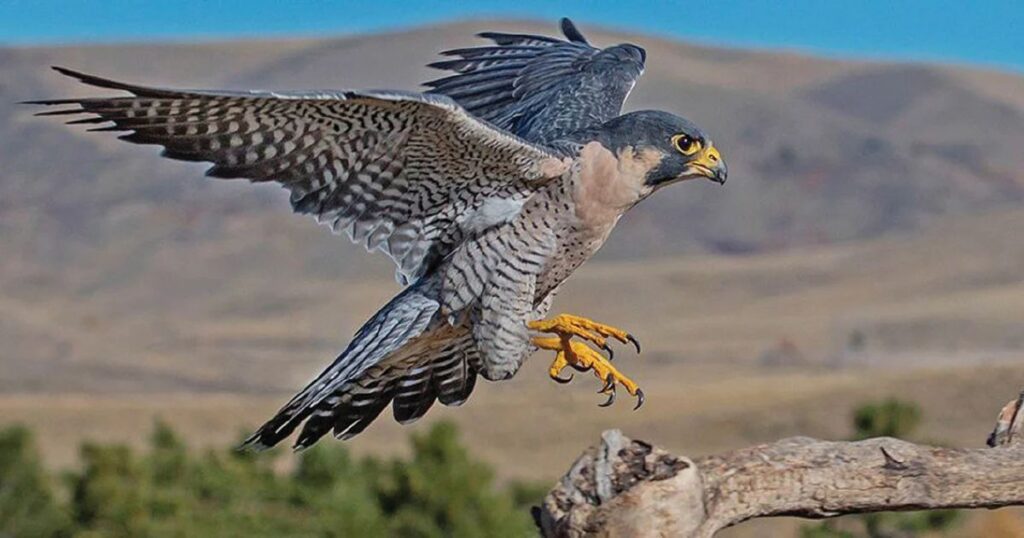
While it may not win in straight-line sprints, this bird excels in sustained gliding, covering vast distances with minimal energy expenditure. Its wingspan can reach nearly 12 feet, allowing it to harness wind currents over oceans effortlessly.
This raises intriguing questions about how flight adaptations shape the lifestyles of different species, inviting us to consider not just who is fastest but also how various birds have evolved to master their environments.
Speed vs. Agility in Birds
When exploring the dynamics of speed vs. agility in birds, it’s essential to understand that these two traits serve distinct evolutionary purposes. Speed often correlates with migratory species, such as the Arctic Tern, which holds the record for the longest migration.
These birds rely on sheer velocity to cover vast distances and escape predators, showcasing an aerodynamic design that prioritizes streamlined bodies and powerful wings. However, speed alone does not define avian success; agility plays a crucial role in survival for many species.
Agility is particularly vital for birds that navigate complex environments, like woodpeckers and hummingbirds. These birds exhibit remarkable maneuverability, allowing them to dart between branches or hover in place to feed on nectar. Their unique wing structures and muscle control enable rapid directional changes, making them adept at evading threats and accessing food sources.
This distinction highlights a fascinating trade-off: while speed can be advantageous for long-distance travel and escaping danger, agility is essential for thriving in intricate habitats where precision matters most. Understanding this balance enriches our appreciation of avian adaptations and their ecological roles.
Hunting Techniques of High-Speed Birds
High-speed birds, such as the peregrine falcon and the golden eagle, employ a range of sophisticated hunting techniques that showcase their remarkable adaptations. One of the most fascinating strategies is the stoop, or high-speed dive, which allows these avian predators to reach speeds exceeding 240 miles per hour.
During this breathtaking descent, they fold their wings close to their bodies, minimizing air resistance and maximizing acceleration. This technique not only demonstrates their physical prowess but also highlights their keen eyesight, which enables them to spot prey from great distances while in flight.
High-speed birds often utilize a combination of aerial agility and strategic positioning to outmaneuver their targets. They may soar at impressive altitudes, scanning the landscape for movement, before executing sudden dives to catch unsuspecting prey off guard. Some species demonstrate an understanding of wind currents, using them to gain altitude effortlessly before launching into their high-speed pursuits.
This intricate interplay between speed, strategy, and environmental awareness is a testament to the evolutionary marvels of these birds, making their hunting techniques not only effective but also a captivating aspect of their survival.
Fastest Birds in North America and the World
When discussing the fastest birds in North America, the Peregrine Falcon stands out as a true marvel of nature. This remarkable raptor has been recorded diving at speeds exceeding 240 miles per hour, making it not only the fastest bird in North America but also the fastest animal on the planet.
Its incredible speed is not just a spectacle; it plays a crucial role in its hunting strategy, allowing it to swoop down on unsuspecting prey with astonishing precision. Observing this magnificent creature in action, particularly during its courtship displays, reveals a level of agility and power that captivates birdwatchers and nature enthusiasts alike.
On a global scale, the title of the fastest bird belongs to the same Peregrine Falcon, but when considering level flight, the Brazilian free-tailed bat takes the crown with its impressive aerial maneuvers. However, the Common Swift deserves recognition for its breathtaking speed in horizontal flight, reaching up to 69 miles per hour.
These birds showcase a unique adaptation to their environments, with their streamlined bodies enabling them to cover vast distances in search of food. The diversity among the fastest birds illustrates not only the thrill of avian speed but also highlights the evolutionary adaptations that have allowed these species to thrive in their respective ecosystems.
Can Any Bird Outspeed the Peregrine Falcon?
When it comes to speed in the avian world, the peregrine falcon reigns supreme, boasting a breathtaking diving speed that can exceed 240 miles per hour. This remarkable ability makes it not only the fastest bird but also one of the swiftest animals on the planet.
The question remains: can any bird outspeed the peregrine falcon? While other birds showcase impressive velocities, particularly during level flight, none have been documented to surpass the falcon’s astonishing dive speeds.
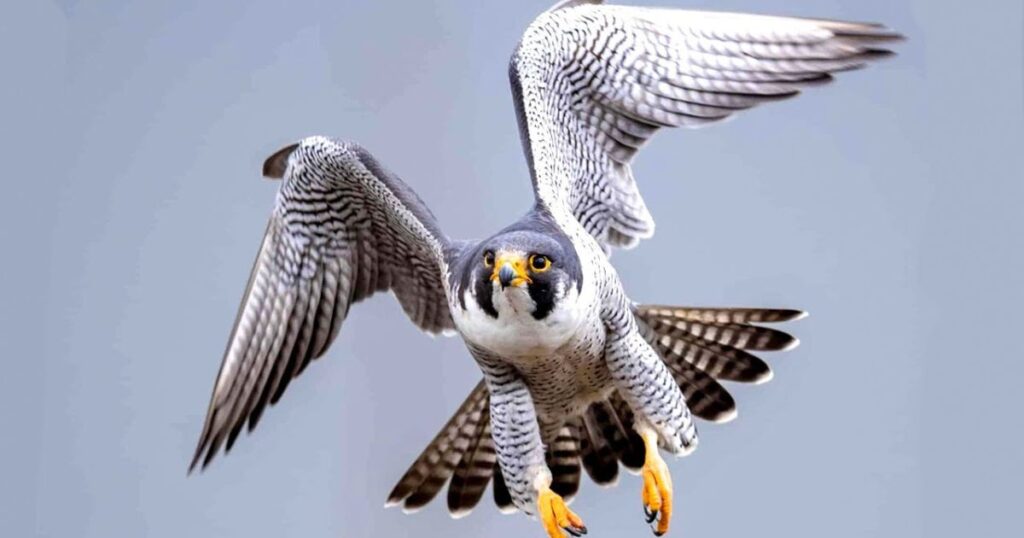
Some contenders, like the golden eagle and the common swift, exhibit extraordinary flight capabilities in their own right. The golden eagle can reach speeds of up to 150 miles per hour during its hunting stoop, while the common swift is known for sustained horizontal flight speeds around 70 miles per hour.
Yet, even these impressive numbers fall short when compared to the peregrine’s unparalleled prowess. This raises intriguing considerations about evolutionary adaptations; the peregrine’s unique aerodynamic body and powerful musculature are specifically tailored for high-speed pursuits, making it a true marvel of nature.
Read More: “What Does Seeing a Cardinal Mean?“
Final Thoughts
The fastest bird in the world is the peregrine falcon, renowned for its incredible speed and agility during hunting dives, known as stoops. Capable of reaching speeds over 240 miles per hour, this remarkable bird not only showcases the wonders of nature but also highlights the evolutionary adaptations that allow it to thrive in various environments.
The peregrine falcon’s impressive aerial skills are a testament to the beauty and diversity of avian life. By understanding these magnificent creatures, we can foster a greater appreciation for wildlife conservation efforts. To learn more about these fascinating birds and how you can contribute to their preservation, consider supporting local conservation initiatives.
FAQ’s
How fast is a golden eagle?
Golden eagles are known for their remarkable speed and agility in flight. When soaring, they can reach speeds of up to 30 to 40 miles per hour (48 to 64 kilometers per hour) with ease.
During a hunting stoop, or dive, a golden eagle can accelerate to impressive speeds of around 150 miles per hour (240 kilometers per hour).
What bird is faster than a jet?
The bird that is often cited as being faster than a jet is the peregrine falcon. When diving to catch its prey, this remarkable bird can reach speeds of over 240 miles per hour (386 kilometers per hour), making it the fastest animal on the planet.

